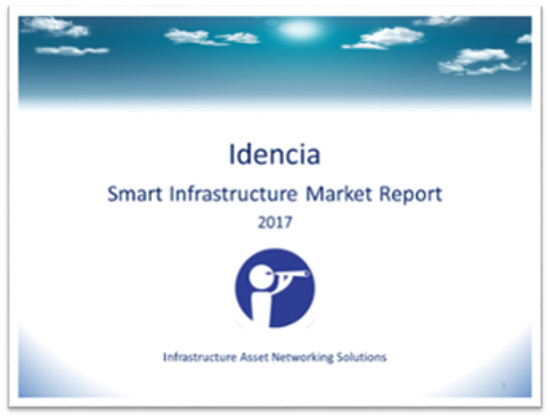(This blog post was updated in June 2018)
Two unconnected announcements were made this past week that will transform infrastructure as we know it. We will look back in the not-too-distant future and recognize that the first week of June 2014 marked the beginning of the "smart infrastructure" era.

The first was Apple's June 2nd announcement of Homekit, a developer tool for writing software that will bring the "Internet of Things" into the home. This will enable the development of apps that use the iPhone and iPad to automate and control devices such as thermostats, appliances, lights, etc. This movement was started earlier this year by Google's $3.2 billion purchase of Nest, a company offering an automated thermostat. But, as always, Apple's entry into the Internet of Things means that consumers will soon follow en masse. As Mary Turner, CEO of British software company, Alertme, describes in a Bloomberg TV interview, Apple's entry provides a "Viagra boost to the Internet of Things".
The second came in the June 5th announcement by Spansion, Inc. (NYSE: CODE) about its introduction of an integrated circuit that is powered by ambient sources such as natural light, vibration and temperature changes. No batteries required!
We are very excited about this for the future of public infrastructure because it unlocks the potential for dynamic information flow. Today, offerings such as Idencia use embedded RFID chips to provide static product tracking records. These make the manufacture, construction and maintenance of infrastructure more productive because they provide instant access (using a smartphone, tablet or PC) to information about quality control practices, batch sourcing, inventory location and maintenance practices, among others. But, the Idencia platform will provide even greater benefit when it provides dynamic information produced by sensors that are included in the structures.
Imagine the improvement in public safety resulting from a state DOT receiving messages from its bridges that inform of cracks that have occurred after a seismic event. Or the cost savings in salt purchases from better understanding of where snow and ice conditions are heavier in some areas and lighter in others. Or from knowing when a sign needs to be replaced because its visibility has deteriorated with age. The applications and benefits are endless.
The primary inhibiting factor to dynamic information flow has historically been the cost of installing and replacing batteries to run sensors, but it now looks like this problem has been solved and we can begin to build "smart bridges".
So, why were both the Apple announcement and the Spansion announcement required to begin the era of smart infrastructure? Because today, where consumers go business follows. Once consumers embrace the Internet of Things, business applications will move in the same direction. The Spansion announcement now makes this available to public infrastructure.
Good thing, too, because exponential leaps in productivity are essential to fund the $4,6 trillion public infrastructure investment required in the US by 2025.
If you would like to learn more, please download our free report on the future of infrastructure:

Jun 7, 2014 9:30:00 AM




Comments